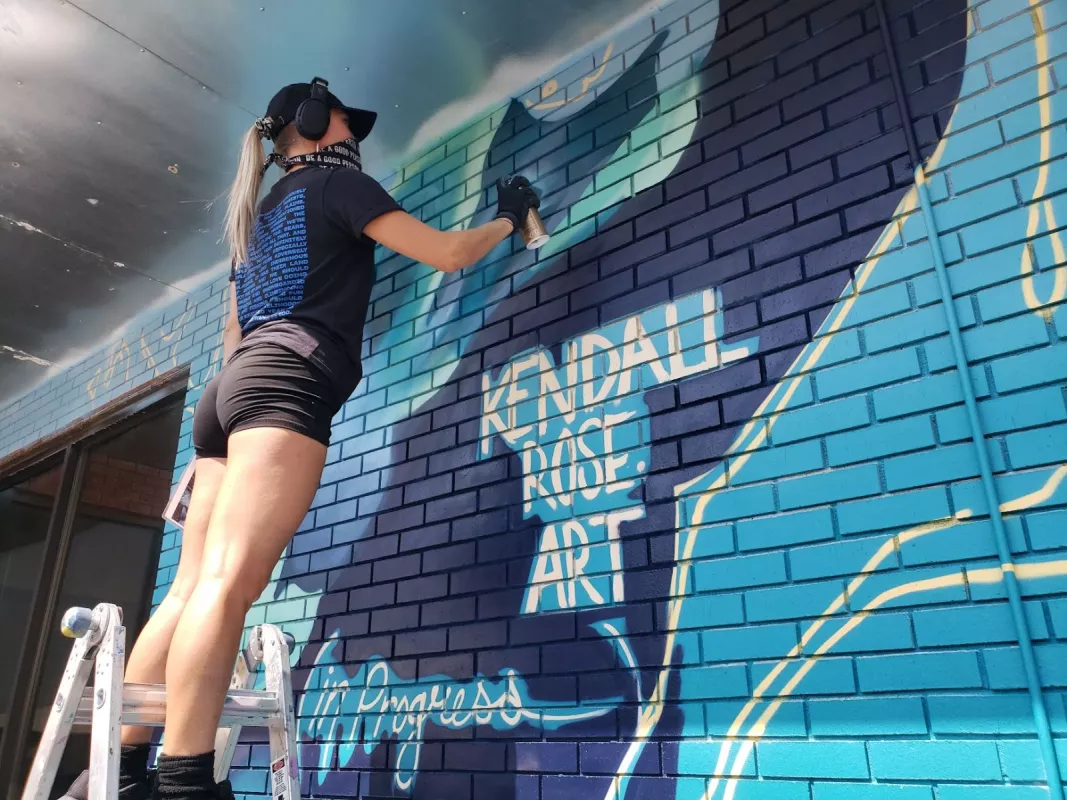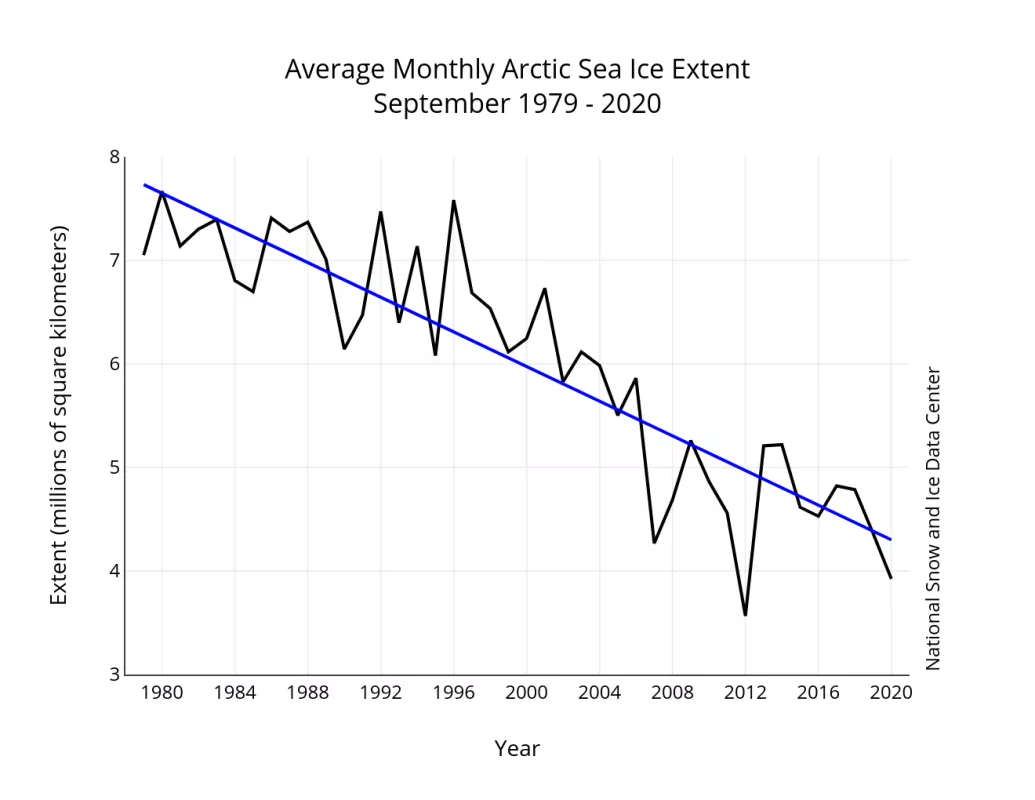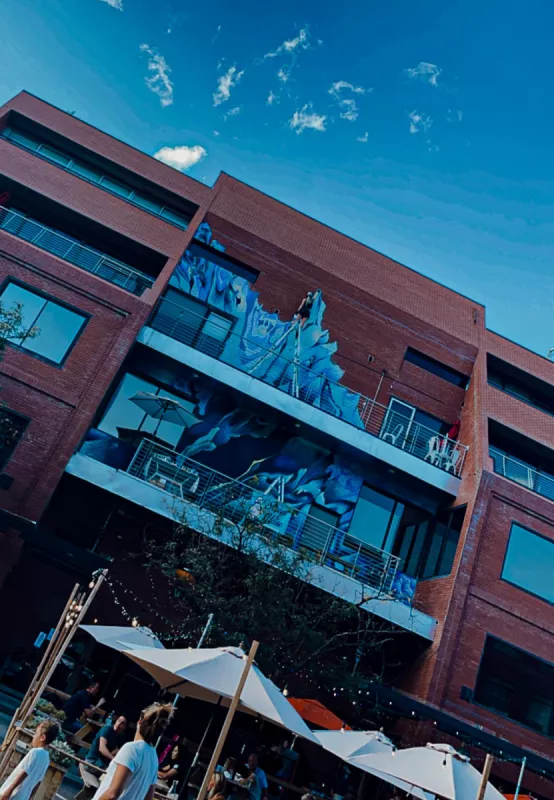Each September, the National Snow and Ice Data Center (NSIDC) at the University of Colorado Boulder informs the public of the annual Arctic sea ice minimum extent, an indicator of how climate change is affecting the Arctic, the fastest-warming region of the globe. This year, as the minimum extent approaches, NSIDC has found a new way to share information about diminishing Arctic sea ice: through art. NSIDC has partnered with visual artist and contemporary painter Kendall Rose Kippley of Denver, Colorado, to share an artistic interpretation of Arctic sea ice loss over time at Street Wise Boulder, an annual “ARTivism” mural festival in Boulder, Colorado. The mural will be up for at least a year.
“I began to focus on glaciers and ice in my paintings while receiving my undergraduate degree in fine arts, while at the same time studying natural resources, Earth processes and sustainability,” said Kippley. “I have always been interested in my artwork becoming an intersect of science, activism and visual storytelling. Collaborating with NSIDC, and having the support of non-profit organizations such as Streetwise and Protect Our Winters on this project has opened the doors to sharing our work through multiple platforms and mediums. I look forward to working together to build awareness around our rapidly changing climate.”
Kippley’s mural, which is located on the second and third balconies of Boulder’s West End Plaza at 1035 Pearl Street, is inspired by an NSIDC graph showing the average monthly September Arctic sea ice extent from 1979, when the satellite record began, to 2020. While sea ice extent can fluctuate from year to year, the graph shows a clear downward trend in ice extent. For reference, the overall rate of sea ice decline in September during that time period is about 3.4 million square kilometers (1.31 million square miles), a rate of ice loss of 13.1 percent per decade relative to the 1981 to 2010 average. To put that to scale, the overall ice loss in September is equivalent to about twice the size of the state of Alaska.
“The sea ice acts like Earth’s air conditioner by reflecting heat from the sun during the Arctic’s long summer days,” said Walt Meier, a senior research scientist at NSIDC. ”That air conditioner is no longer working like it should be and there is not a handy repair service that can fix it, unfortunately.”
On September 10, Kippley also took part in a panel discussion on, “Art, Science, Action; Creating Climate Narratives for the Collective” at The Dairy Arts Center in Boulder. Meier also participated in the panel.
Street Wise Boulder was established in 2019 by Street Wise Arts and aims to amplify arts and culture, represent cultural diversity and encourage dialogue around social advocacy and resilience through the installation of public art murals and related programming in the City of Boulder.
More of Kendall Kipley’s art can be viewed at www.kendallroseart.com.
To receive the 2021 Arctic sea ice minimum extent announcement, please join the NSIDC email list. To learn more about sea ice, visit NSIDC’s Arctic Sea Ice News & Analysis page.


